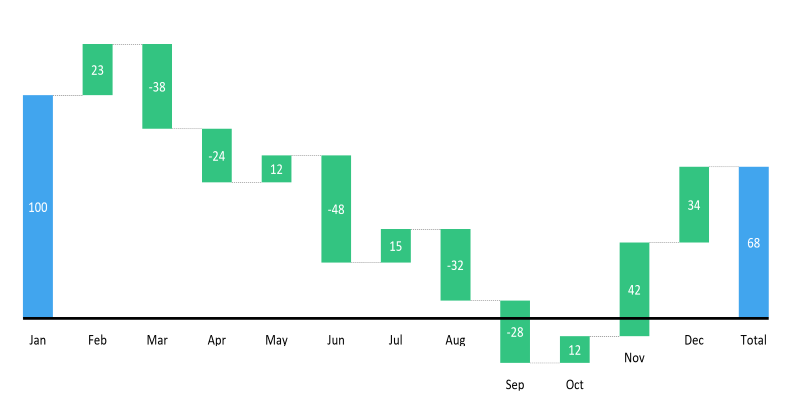Advertisement
It’s no surprise that big tech companies need to make bold decisions when deciding where to focus their resources. Alibaba, known for being one of China’s most influential tech giants, has clearly leaned toward generative AI as its top priority. While quantum computing holds promise, it’s generative AI that has taken center stage at Alibaba. The choice says a lot about where they see immediate value, both for their business and the industries they serve. Let's take a closer look at why that is.
One of the most direct reasons Alibaba favors generative AI is the number of real-world applications it supports right now. From customer service chatbots on Taobao to intelligent product descriptions and content moderation, the technology is already doing useful work. These tools can be integrated quickly into existing platforms without needing major changes to infrastructure. This immediate return on investment gives generative AI a major advantage over quantum computing, which is still mostly in the experimental phase.
While quantum computing might one day help with encryption or drug discovery, those benefits are still theoretical. In contrast, generative AI is already shaping user experiences across Alibaba's platforms.
Generative AI works with the systems that companies already have. Businesses using Alibaba Cloud, for example, can plug into generative AI models without needing new hardware or deep expertise in theoretical physics. That’s not true for quantum computing, which requires specialized knowledge, tightly controlled environments, and new approaches to coding.
Alibaba is a platform company. Its focus is on enabling other businesses to grow. That means they need to offer tools that people can start using right away. Generative AI fits that model perfectly. The tools scale easily and can be offered as services that small and medium businesses can afford.

Alibaba collects massive amounts of data across e-commerce, logistics, finance, and cloud computing. Generative AI allows them to turn that data into something useful—fast. Algorithms that write product listings summarize reviews or predict buying trends are all powered by generative models that learn from this data.
Quantum computing, by comparison, doesn’t have this kind of relationship with data—at least not yet. While quantum algorithms might eventually sort or search through large data sets more efficiently, that future hasn't arrived. Alibaba isn't in the business of waiting for what might come. They’re focused on tools that create value from data now.
When enterprises look to the cloud, they want more than just computing power. They want smart services that make their work easier. Whether it’s generating code, drafting internal reports, translating content, or automating customer responses, generative AI is behind many of these services.
Alibaba Cloud is already positioning itself as a provider of enterprise-ready AI. The models they’ve released are meant to help companies improve efficiency and cut costs. That fits neatly into what businesses are already asking for. It’s much harder to make that case for quantum computing at this stage, where most use cases are still years away.
China has made artificial intelligence a national priority, and Alibaba is deeply tied to that ecosystem. While the country also invests in quantum research, AI is far more prominent in current government strategy. This gives companies like Alibaba extra support in the form of grants, partnerships, and research collaborations focused on AI.
Choosing generative AI isn’t just about technology—it’s also about policy alignment. Alibaba benefits from being in sync with broader economic and innovation goals. That’s harder to do with quantum computing, which has more restricted commercial use and a much smaller talent pool.

Alibaba doesn't operate in a vacuum. It's constantly compared with Amazon, Google, Microsoft, and others, who are racing ahead in generative AI. If Alibaba didn't match those investments, it would risk falling behind—not only in product quality but also in perception.
Staying visible in the global AI race is part of how Alibaba maintains its relevance on the world stage. That means building large language models, releasing them to the public, and applying them to as many services as possible. Quantum computing, for now, doesn’t help with that kind of visibility. Generative AI does.
Hiring experts in AI is hard—but not impossible. The field has matured enough that many engineers, researchers, and data scientists already have experience with deep learning, natural language processing, and machine learning infrastructure. Alibaba has already built teams and cloud systems designed around this.
Quantum computing doesn't have that kind of ecosystem yet. The talent pool is smaller. The tools are not as standardized. And the hardware is a different world altogether for a company like Alibaba, which adds up to a major gap between what's possible now and what quantum might offer much later.
Generative AI allows Alibaba to get the most out of the systems and teams they’ve already invested in. That matters when you're looking to grow quickly and keep pushing products out to users and businesses.
The tech industry moves quickly. Companies that wait too long risk losing their edge. Alibaba sees generative AI as something it can monetize and scale right away. That’s a sharp contrast to quantum computing, which—even in the best-case scenario—is still a long-term bet.
Every year matters in tech. Generative AI gives Alibaba the tools to move fast, serve customers better, and respond to market changes in real time. It's not just about what the tech can do. It's about how soon you can use it to solve real problems. For Alibaba, that’s the deal-breaker.
Generative AI meets Alibaba where it matters—scale, usability, market demand, and real-time value. It's not that they're dismissing quantum computing. They've invested in it, published research, and even built their own quantum lab. However, the decision to prioritize generative AI is a practical one. It reflects where business needs are right now and where technology can make the biggest difference in the shortest time.
In the world of tech, timing is everything. And when it comes to Alibaba’s focus, generative AI isn’t just timely—it’s the right call.
Top of Form
Advertisement

What happens when robots can feel with their fingertips? Explore how tactile sensors are giving machines a sense of touch—and why it’s changing everything from factories to healthcare

Explore how multimodal GenAI is reshaping industries by boosting creativity, speed, and smarter human-machine interaction

Learn how to create a waterfall chart in Excel, from setting up your data to formatting totals and customizing your chart for better clarity in reports

Google's Willow quantum chip boosts performance and stability, marking a big step in computing and shaping future innovations

How using Hugging Face + PyCharm together simplifies model training, dataset handling, and debugging in machine learning projects with transformers

Explore the role of a Director of Machine Learning in the financial sector. Learn how machine learning is transforming risk, compliance, and decision-making in finance

SmolVLM2 brings efficient video understanding to every device by combining lightweight architecture with strong multimodal capabilities. Discover how this compact model runs real-time video tasks on mobile and edge systems

How to Integrate AI in a Physical Environment through a clear, step-by-step process. This guide explains how to connect data, sensors, and software to create intelligent spaces that adapt, learn, and improve over time

Learn different ways of executing shell commands with Python using tools like os, subprocess, and pexpect. Get practical examples and understand where each method fits best

Learn the top eight impacts of global privacy laws on small businesses and what they mean for your data security in 2025.

Beginner's guide to extracting map boundaries with GeoPandas. Learn data loading, visualization, and error fixes step by step

Is the UK ready for AI’s energy demands? With rising power use, outdated cooling, and grid strain, the pressure on data centers is mounting—and sustainability may be the first casualty